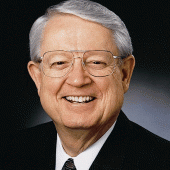Let’s consider Luke 19:45–46:
“Then Jesus entered the temple and began to drive out the people selling animals for sacrifices.
He said to them, ‘The Scriptures declare, “My temple will be a house of prayer,” but you have turned it into a den of thieves’” (NLT).
“Jesus entered the Temple…”
Imagine that moment.
We’re talking here about the Herodian Temple. It was a massive complex and the dominating figure of the city of Jerusalem in the days of Jesus. Solomon’s Temple had been splendid—and after it was destroyed and God’s people sent into exile, many were disappointed in the restoration.
But Herod the Great saw to the construction of the second temple; the temple in view when Jesus rode into Jerusalem on Palm Sunday, the temple where Simeon and Anna beheld His glory as an infant, the temple where His worried parents found Him when He was 12 years old, the temple where He had taught and healed from Solomon’s Portico to the Beautiful Gate. The curtain of this temple would be torn in two from top to bottom and the Holy of Holies laid bare as the One who, in this passage, enters the temple as Jesus will soon be revealed as the reality of God with us all.
But who is Jesus, and what is the temple?
Moses received instructions for constructing the old covenant tabernacle from God Himself (Exodus 25–31). Later, King Solomon supervised the building of the temple in Jerusalem, and the temple was based on the basic design of the tabernacle that it replaced (2 Chronicles 2–7).
Given these realities, first-century Jews understood that any changes made to the temple required divine authority as mediated through the king of Israel. In other words, the ancient Jews believed that only the Messiah could do something like what Jesus did when He cleansed the temple of animal sellers and money changers (John 2:13–17).
That explains why the Jews responded by asking Him for a sign (verse 18). They wanted proof that Jesus had the Messianic authority to remove the merchants from the temple. Christ did not give them a sign immediately; instead, He gave an enigmatic response that they would destroy “this temple” and in three days He would raise it up (verse 19).
Clearly, the Jewish opposition did not understand Jesus. (In fact, even the disciples did not get our Lord’s meaning at first because John 2:22 says that they did not understand Jesus’ saying until His resurrection.) The Jews thought Jesus was talking about the physical temple in Jerusalem, which had taken 46 years to build (verse 20). In fact, the temple was not even really finished in Jesus’ day because work on it would continue off and on until AD 63, some 30 years after Jesus’ death and resurrection.
But John inserts an explanatory comment in verse 21: the temple of which Jesus spoke was His own body. Thus, we see our Lord identifying Himself as the new and true Temple. The old covenant sanctuary was going to be superseded by a new temple, even Jesus Himself, in whom His people are being knit together as a true sanctuary for God (1 Peter 2:4–5).
During this Holy Week, I invite you to see Jesus.
See Jesus walking and praying and eating and teaching.
See Jesus alone with the Father and see Him preparing His friends for something none of us could actually imagine: His crucifixion.
Go slow this week.
Take it in.
Yes, this is the week that changed the world, but how has it changed you?
Holy Week transformed the Jewish temple, and it can transform you





















